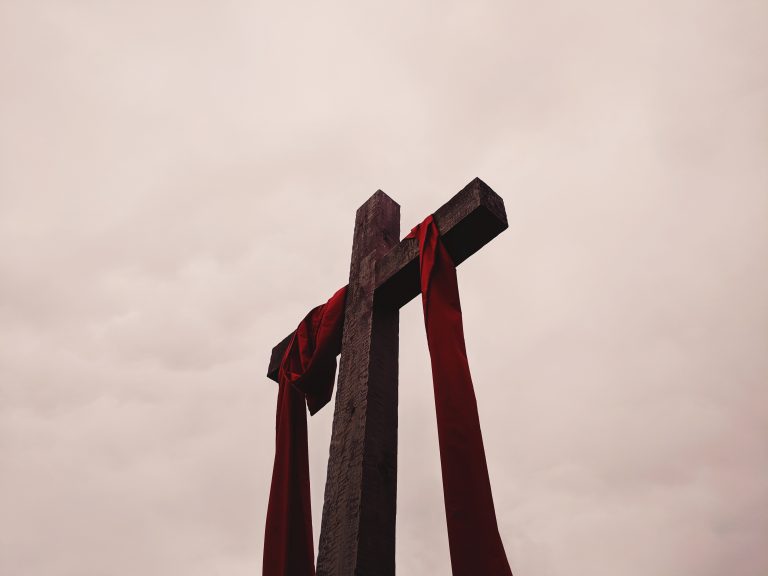by Father Manuel Gonzalez Lopez de Lemus
Father Manuel Gonzalez offers an article on how to live the meaning of Holy Week in these times of pandemic, without processions on the streets, which is a widespread tradition especially in countries such as Spain.
* * *
Holy Week is the time in which we Christians celebrate the most important mystery of our faith, when Jesus Christ teaches us why He came on earth. A <Christmas> carol expresses it in a few words, when it reminds us that He came to suffer. The Paschal Mystery encompasses Christ’s Passion, Death and Resurrection.
Since the beginning, the Church has celebrated these events with a 40-day preparation that we call Lent. During this time, Christians are encouraged to fast, to spend time in prayer and to give alms. We prepare thus to be attentive to those mysteries of our faith. Contrition and forgiveness of sins through the Sacrament of Penance or Confession help us to fight against sin and to live in grace.
Holy Week begins with the celebration of Palm Sunday. It’s a day of glory and splendour; we celebrate Jesus’ triumphal entrance in Jerusalem. Processions begin in many places those days. The pandemic has impeded the celebration of all those stellar times of popular piety, which do so much good to the common people. These processions introduce us, in a very plastic and sensorial way, on this path of the last days of Jesus’ earthly life.
However, the Church continues to celebrate these mysteries in her liturgical celebrations, with the use of masks, adequate distancing and the recommended gels.
Now I want to focus on these celebrations of Holy Week. I will try to describe them briefly to help us live them better. Popular piety is so rich, that no one can attend all the events that are celebrated in different places. Hence, to know them will help us to discover how they are celebrated in different places.
On Palm Sunday we can participate, with the necessary prudent measures, in the procession of palms made around a church or even inside, if it’s large. Then in the Readings, the Passion is read in the Gospel, according to one of the evangelists: Matthew, Mark or Luke. It’s a long Reading, but it’s worthwhile to put us in antecedents of what is going to happen and which the Church celebrates.
In the Readings of Holy Mass on Holy Monday, Tuesday and Wednesday, we recall the events of those days focused on the figure of Judas, to remind us of that expression used in the Liturgy: the day He was betrayed.
The Holy Week ceremonies begin with the arrival of Holy Thursday. The Church reflects all her splendour and beauty here on expressing the great love of our Redeemer and Saviour for us. That day all Masses are stopped except for the Chrism Mass in the morning and the celebration of the Lord’s Supper. All priests celebrate the Chrism Mass with their Bishop; priestly promises are renewed and three oils are blessed, which are used for the administration of the Sacraments of Baptism, Confirmation, Holy Orders and the Anointing of the Sick.
The Mass of the Lord’s Supper is celebrated in the afternoon. On this day, the Church reminds us of three ideas: love between brothers, the institution of the Eucharist and the institution of Holy Orders. The washing of the feet can be done, which reminds us and makes present Jesus great love for His disciples, whose feet He washed, and the reading of the new commandment: Love one another as I have loved you. Recalled is the moment in the Last Supper when the Lord said to the Apostles: Take and eat, for this is my Body . . . and then He did the same with His Blood. Recalled thus is the institution of the Eucharist. Finally, the institution of Holy Orders is recalled with these words of Jesus: Do this in memory of Me. At the end of this Mass, the Eucharist is taken and placed in the Monument, the sacred place where the Lord is left to spend the night of Holy Thursday to Friday, and where the faithful can adore and pray to Him. He remains there until the celebrations of Holy Friday afternoon. All churches await the traditional visits to seven churches, which the faithful usually do, to visit Jesus in the Blessed Sacrament, with a pause before the Most Holy.
The Church celebrates Good Friday with unique solemnity. Churches are stripped of decorations and the altars, which represent Christ, are completely stripped. The celebration includes three very distinct parts: the first is the Reading of the Passion according to Saint John. It’s usually done with three readers. It’s a long and profoundly moving reading with many details of those moments. The second part is the Adoration of the Cross. The purple veil is slowly uncovered, the people go to the cross and kiss it but, due to the pandemic, they will only bow their head. Finally, an altar cloth is prepared, the Eucharist is brought from the Monument and Communion is administered. The Holy Week ceremonies end with this.
Holy Saturday is a day of mourning. Jesus is in the sepulcher and the Church accompanies Mary who is suffering the loss of her Son Jesus Christ.
On Saturday night — it used to be at midnight — the Easter Vigil is celebrated, but this already belongs to Easter and deserves a separate article.
Holy Week, with or without the pandemic, is very rich; it’s for us to be plunged in these mysteries in which God’s love for men is so eloquently expressed and for which we are all very grateful. Thank you, Lord, for so much love and forgive our indifference towards You.
Father Manuel Gonzalez Lopez de Lemus
YouTube: Fr. Manuel Gonzalez / Facebook: Emmanuel J. Gonzalez
Instagram: @mitogonzalez2013 / Blog: Spiritual considerations










